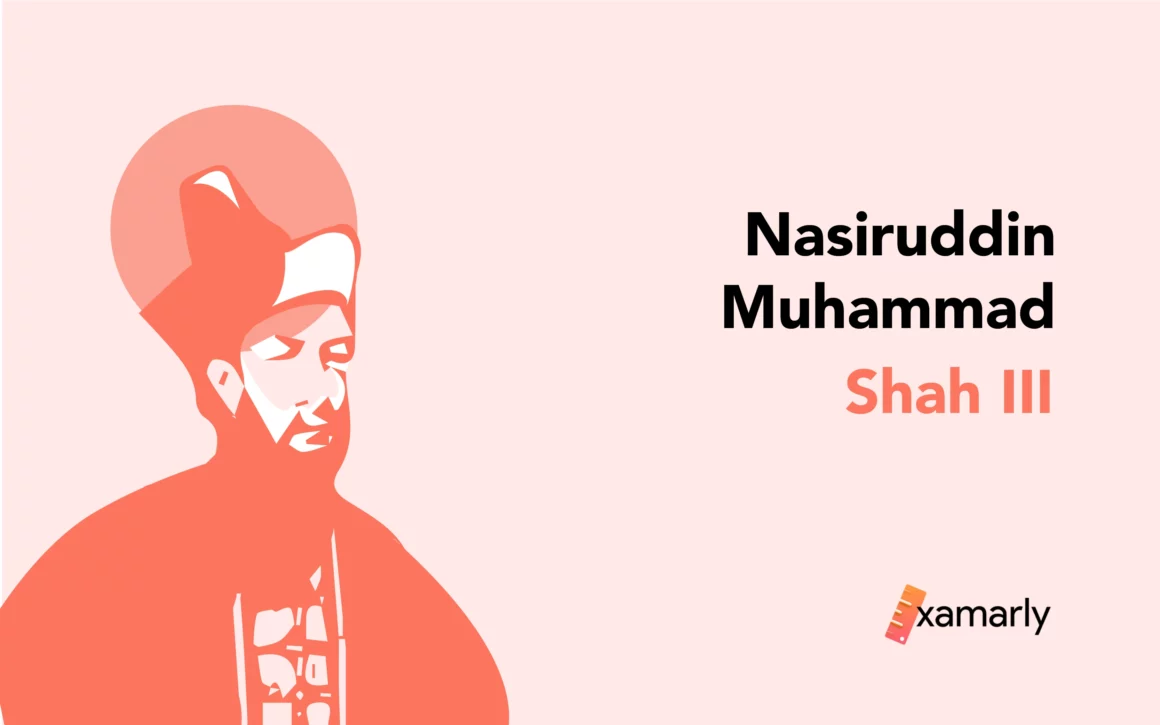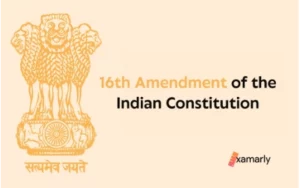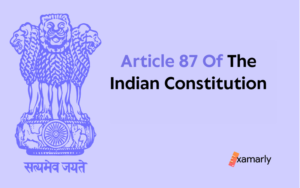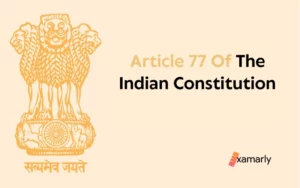Are you looking for important points about the Nasir Ud Din Muhammad Shah III?
The Muslim Tughlaq dynasty was ruled by Muhammad Shah. His father was Sultan Feroze Shah Tughluq.
If you are a UPSC aspirant and looking forward to reading more information about Nasir Ud Din Muhammad Shah III, this article will help you formulate relevant and accurate points. Let’s get into the blog to explore Muhammad Shah III of the Tughlaq Dynasty.
Tughlaq Dynasty – In a Nutshell
The Tughlaq Dynasty was a medieval Indian dynasty that ruled from 1320 to 1413 CE. It was founded by Ghiyasuddin Tughlaq and reached its peak under Muhammad bin Tughlaq.
The Tughlaqs were known for their ambitious building projects, including the construction of the Tughlaqabad Fort in Delhi.
They also had a reputation for being brutal rulers, with Muhammad bin Tughlaq’s failed attempts to move the capital of the empire being particularly notorious. The Tughlaq Dynasty declined in the 15th century due to internal conflicts and external pressures from invading forces.
Early Life
Nasir ud Din Muhammad Shah III was the last ruler of the Tughlaq dynasty, which ruled over large parts of the Indian subcontinent in the 14th century. He was born in 1370 CE, the son of Firuz Shah Tughlaq, who was the Sultan of Delhi from 1351 to 1388 CE.
As the son of a Sultan, Nasir ud Din Muhammad Shah III grew up in the royal palace in Delhi, surrounded by luxury and wealth. He received a traditional education in Arabic, Persian, and Islamic theology, and was also trained in the art of war and administration.
In 1394 CE, at the age of 24, Nasir ud Din Muhammad Shah III ascended to the throne after the death of his father. He inherited a kingdom that was in decline, with a weak economy and a crumbling administration.
Despite these challenges, Nasir ud Din Muhammad Shah III tried to revive the glory of the Tughlaq dynasty and embarked on several ambitious projects to strengthen his rule.
One of his first acts as Sultan was to restore the city of Delhi, which had fallen into disrepair. He also ordered the construction of a new palace and several public buildings, including mosques and hospitals.
In addition, he launched military campaigns against neighbouring kingdoms, in an attempt to expand his territory and secure his borders.
However, despite his efforts, Nasir ud Din Muhammad Shah III was unable to reverse the decline of the Tughlaq dynasty.
He faced numerous challenges during his reign, including rebellions by his nobles, invasions by the Mongols, and a devastating famine that killed thousands of his subjects.
Nasir ud Din Muhammad Shah III ruled until he died in 1413 CE, after a reign of almost 20 years. He was succeeded by his nephew, who was unable to prevent the final collapse of the Tughlaq dynasty, which was replaced by the Sultanate of Delhi.
Reign
During his reign, Nasir ud din Muhammad Shah III focused on improving the economy of his kingdom by encouraging trade and commerce. He also established the Firoz Shah Kotla Fort in Delhi, which is now a popular tourist attraction.
However, his reign was not without challenges. He faced opposition from his nobles, who were dissatisfied with his policies and resented his interference in their affairs. In addition, his reign was marked by a famine that caused widespread suffering and death.
Amidst the reign of Nasir ud din Muhammad Shah III Tughlaq, the town of Jalesar became the centre of political activities as several Amirs who were dissatisfied with Abu Bakr, the then ruler of the Delhi Sultanate, joined Muhammad Shah’s camp.
The most powerful and capable among them were Malik Sarvar and Nasirul Mulk Khizr Khan, who significantly strengthened Muhammad Shah’s support base.
This support grew to include the governors of various regions, such as Multan, Samana, Lahore, Hissar, and Hansi, and even the Kotwal of Delhi, Islam Khan, who all pledged their allegiance to Muhammad Shah.
In the face of increasing opposition and the growing support of his rival, Abu Bakr fled to Mewat, leaving Muhammad Shah to ascend to the throne of Delhi.
Muhammad Shah then sent his army to defeat Abu Bakr, which they accomplished, resulting in Abu Bakr’s imprisonment in Meerut, where he eventually died.
Related Posts:
- History Optional Syllabus For UPSC
- History Optional for UPSC
- Slave Dynasty: A Brief History
- Abu Bakr Shah: Medieval Indian History Notes
Nasir Ud Din Muhammad Shah III and Nusrat Shah
- Nasir ud din Mahmud was the younger son of Sultan Nasir ud din Muhammad Shah III.
- Ala ud-din Sikandar Shah, Nasir ud din’s elder brother, became the sultan after their father’s death in 1390.
- However, Ala ud-din died of illness in 1394, and Nasir ud din succeeded him as the new ruler.
- A three-year-long succession war that started in 1394 and lasted until 1397, erupted between Nasir ud din Mahmud, the new ruler of the Delhi Sultanate, and his relative, Nusrat Shah (or Nasrat Khan), who challenged his claim to the throne.
- The war was fought between Nasir ud din, who ruled from Delhi, and Nusrat Shah, who ruled from Firozabad.
- Nasir ud din emerged victorious and became the last ruler of the Tughlaq dynasty of the Delhi Sultanate.
Death
The exact cause of Nasir ud din Muhammad Shah III’s death is not entirely clear, but according to historical accounts, he died in January 1394, likely due to illness or natural causes.
After his death, his older son Ala-ud-din Sikandar Shah succeeded him as sultan, but he too passed away a few months later, also likely due to illness.
This led to a power struggle between Nasir ud-din’s younger son Nasir ud din Mahmud and his relative Nusrat Shah, which resulted in a three-year war of succession, after which Nasir ud din Mahmud became the last ruler of the Tughlaq dynasty of the Delhi Sultanate.
Nasir Ud Din Mahmud Shah Tughluq III: Facts
- Muhammad Shah was the 22nd Emperor of the Delhi Sultanate and the sixth monarch of the Tughlaq dynasty.
- Abu Bakr Shah reigned before him. Ala ud-din Sikandar Shah succeeded him.
- Muhammad Shah was the uncle of Sultan Abu Bakr Shah Tughluq. He resisted Abu Bakr after he seized power over the Tughlaq dynasty of the Delhi Sultanate and engaged in a power struggle for the throne.
- He attacked Delhi in August 1390. Also engaged Abu Bakr Khan in a struggle for the capital’s sovereignty.
- After the eventual defeat of Abu Bakr. In 1390, Muhammad Shah ascended to the throne and ruled until 1394.
- After his defeat, Sultan Muhammad arrested Abu Bakr. He incarcerated him in the fort at Meerut, where he soon perished.
- On January 20, 1394, Muhammad Shah passed away. He oversaw the Delhi Kingdom for 4 years till he passed away.
Conclusion
In 1390, Nasir ud din Muhammad Shah III ascended to the throne. He was the Tughlaq dynasty’s Sultan, who held power in the Delhi Sultanate until 1394.
His older son, Ala ud-din Sikandar Shah, succeeded him after his death, but he died of sickness on Jan 20, 1394. Eventually, Nasir ud din Muhammad Shah III, the younger son of Nasir ud din Shah III, stepped in. He was the last emperor of the Tughlaq dynasty who ruled the Delhi Sultanate.
In this blog, we have included some important information about this historical figure exclusively for UPSC exam preparation. Have you taken notes already? well, grab a pen and increase the pace of exam preparation.
Frequently Asked Questions
Who laid the foundation of the Tughluq dynasty?
The Tughluq dynasty was started by Ghiyas-ud-din Tughluq, also known as Ghazi Malik.
Who is the last monarch of the Tughlaq dynasty?
Nasir ud din Mahmud Shah Tughlaq was the last monarch of the Tughlaq Dynasty.
What was the War of Succession with Nusrat Shah?
The War of Succession with Nusrat Shah was a three-year power struggle between Nasir ud din Mahmud and his relative Nusrat Shah for the throne of the Delhi Sultanate after the death of Ala-ud-din Sikandar Shah.
What was the reign of Nasir Ud Din Muhammad Shah III like?
During Nasir Ud Din Muhammad Shah III’s reign, the town of Jalesar became a center of political activities as various Amirs who were dissatisfied with the ruling sultan Abu Bakr joined his camp. Nasir Ud Din Muhammad Shah III died after ruling for only four years.
How did Nasir Ud Din Muhammad Shah III die?
Nasir Ud Din Muhammad Shah III is believed to have died of natural causes or illness in January 1394, after which his son Ala-ud-din Sikandar Shah succeeded him as sultan.
What was the decline of the Tughlaq Dynasty?
The decline of the Tughlaq Dynasty was attributed to various factors, including weak rulers, ineffective governance, and economic instability. Additionally, the dynasty faced repeated Mongol invasions and rebellions from regional governors, which further weakened their hold on power.






